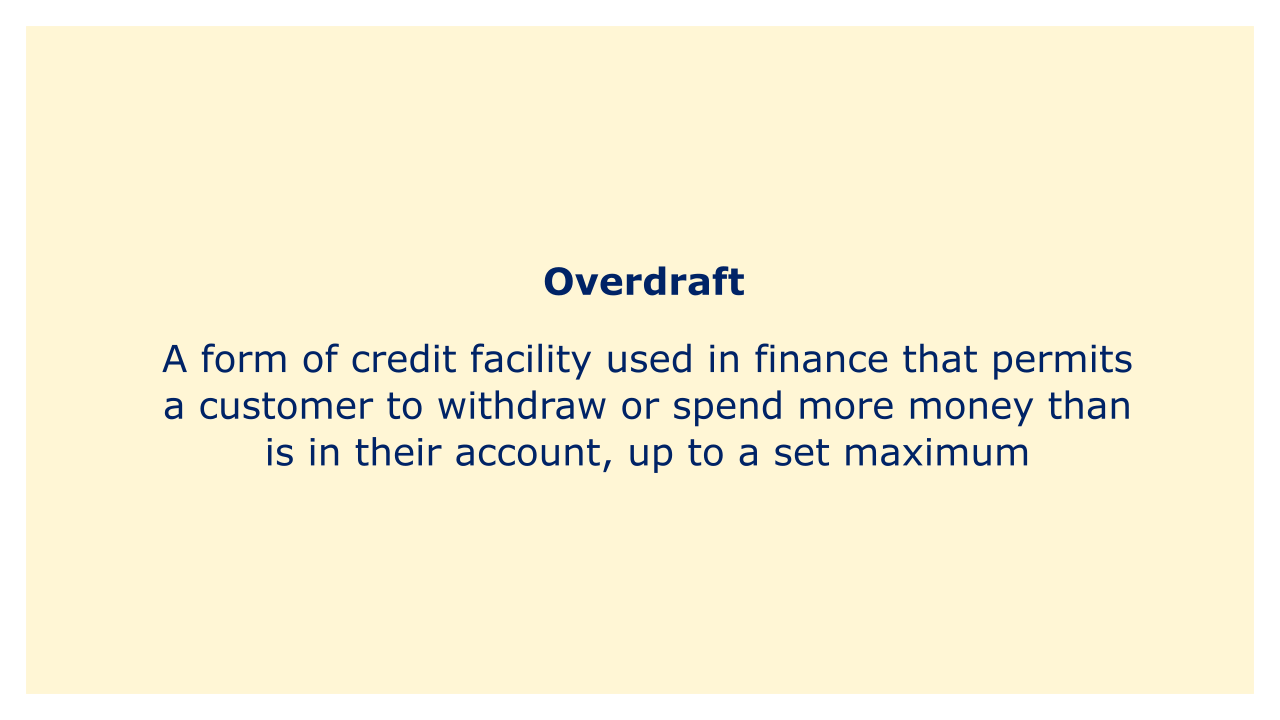 |
| Image: Moneybestpal.com |
An overdraft is a form of credit facility used in finance that permits a customer to withdraw or spend more money than is in their account, up to a set maximum. Banks and other financial institutions frequently provide customers with an overdraft as a short-term borrowing solution to help them cover unforeseen costs or cash flow shortages.
An overdraft balance, which is basically a negative balance, occurs when a customer withdraws more money from their account than is available. In comparison to other forms of credit, the overdraft balance accrues interest and fees, which are frequently charged at a greater rate. The customer must pay back the overdraft balance within a set time frame, usually within 30 days.
Overdrafts may be authorized or unauthorized. An authorized overdraft is a previously agreed-upon arrangement between the bank and the client in which the client accepts a particular overdraft limit and the conditions of repayment. On the other hand, an unauthorized overdraft happens when a customer exceeds their available balance without first receiving bank approval. Generally speaking, fines and interest rates for unauthorized overdrafts are higher than those for authorized overdrafts.
While overdrafts can be a helpful source of short-term funding, if they are not used properly, they can also be costly and result in a debt cycle. Before utilizing an overdraft facility, customers should carefully analyze its fees and limitations. If a longer-term funding solution is required, they should also look into alternative credit options like credit cards or personal loans.
